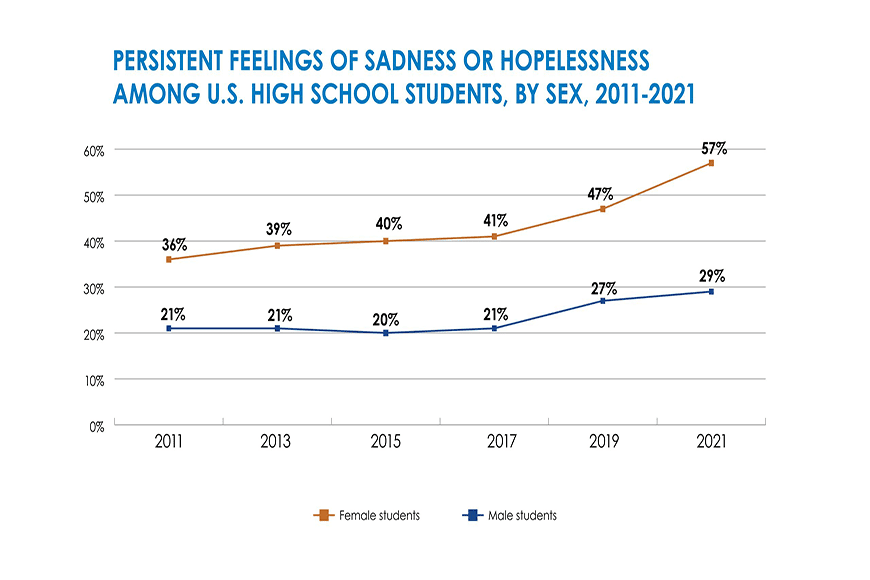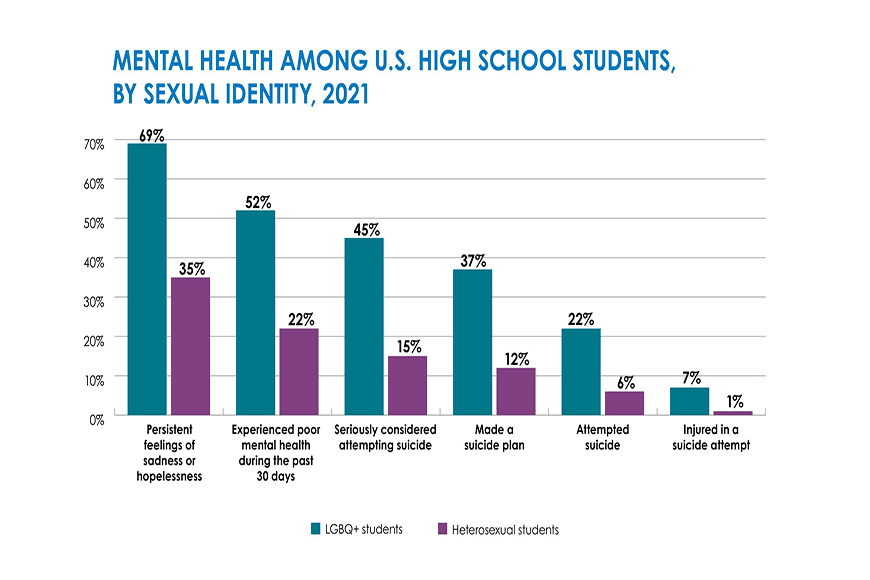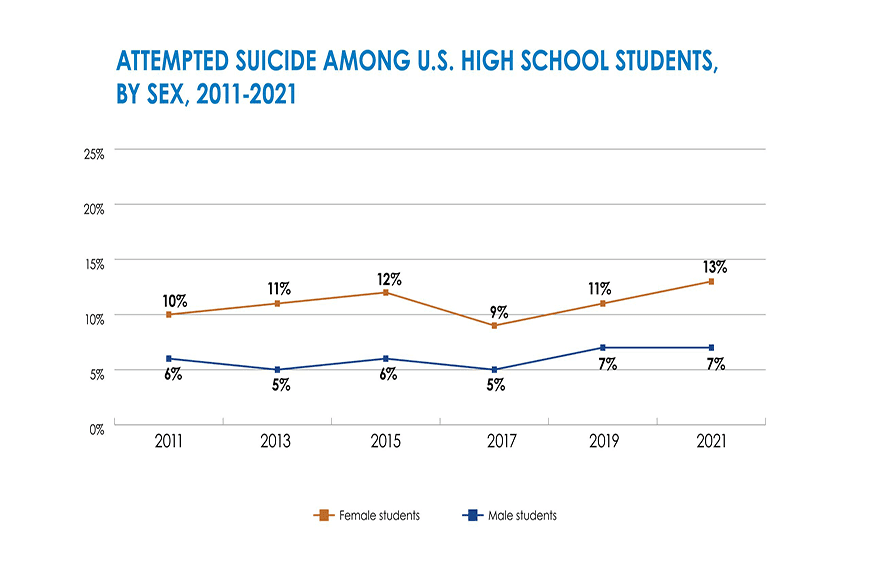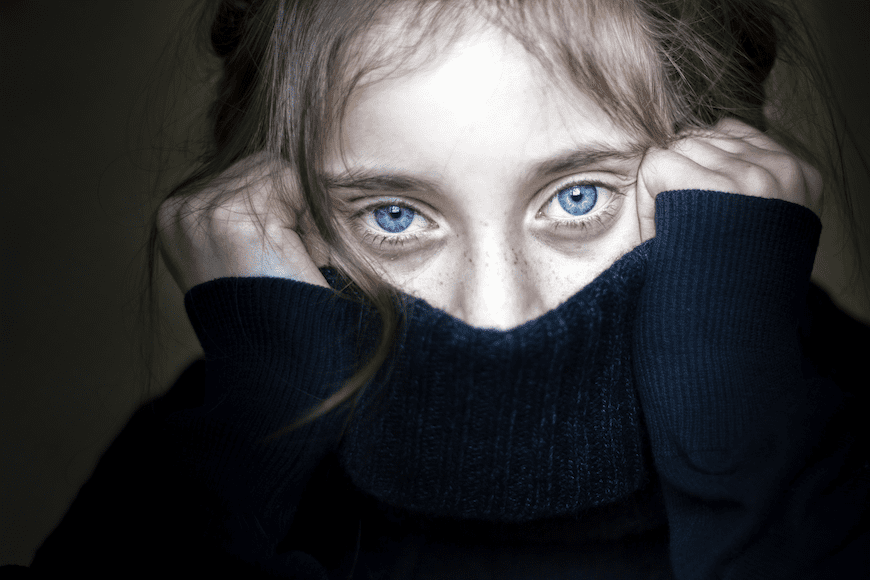Teenage girls in the U.S. are not alright. Nearly 60 percent of them report feelings of persistent sadness or hopelessness, according to a just-released Centers for Disease Control and Prevention (CDC) survey.
The survey responses from more than 17,000 U.S. high school students exposed some disheartening trends in girls’ mental health. Thirty percent of girls said they had seriously contemplated suicide, double the rate among boys and up almost 60 percent from a decade ago.

Almost 1 in 5 have experienced sexual violence in the past year—a 20 percent increase since 2017. More than 10 percent reported they had been forced to have sex at some point in their lives. This is up 27 percent since 2019 and the first increase in this measure the CDC survey has ever recorded in its 22 years.
“As a parent to a teenage girl, I am heartbroken. As a public health leader, I’m driven to act,” the CDC’s chief medical officer, Dr. Debra Houry, said at a briefing about the report.
But girls are not the only ones who are struggling psychologically.
Abortion Restrictions May Increase Suicide in Young Women
tWitch’s Death By Suicide: Don’t Blame ‘High Functioning Depression’
The Real Strength of Wide-But-Weak Social Ties In Suicide Prevention
In 2021, more than 1 in 10 teenagers who identified as gay, lesbian, bisexual or questioning (LGBQ+ ) admitted to skipping school because of safety concerns. In this group, nearly 20 percent had, in fact, experienced bullying at school or sexual violence. More than half with this identity had seriously considered attempting suicide and nearly 20 percent had attempted suicide. Almost 75 percent reported persistent feelings of sadness or hopelessness.

In general, adolescents across a wide spectrum aren’t faring well mentally. More than 40 percent of the high schoolers surveyed said that they’d felt so sad or hopeless within the past year that they were unable to do their regular activities, such as schoolwork or sports, for at least two weeks. Teens of all races and ethnicities reported an increase of almost 20 percent in suicide attempts.

More recent data also suggests youth wellbeing is moving in the wrong direction. Another newly released study by the Center for Suicide Prevention and Research at Nationwide Children’s Hospital found that suicides by firearm were higher than expected during the pandemic, especially for boys and, most notably, no subgroup of people aged 5 to 24 had significantly fewer suicides than expected.
A combination of complex factors set up young people for a higher risk of mental health issues including depression, anxiety, and substance use disorder, the report explained. The social isolation, online schooling, and sky rocketing social media use kids experienced during pandemic lockdowns only accelerated the downward spiral.
“High school should be a time for trailblazing, not trauma. These data show our kids need far more support to cope, hope, and thrive,” Houry said.
The report did offer a few suggestions to help improve psychological outlook in the younger generation. It called for more programs in schools, such as sex ed, to address the ongoing and growing mental health crisis. School-based activities can make a profound difference in the lives of teens with a relatively small infusion of support to schools, the report said.
“Proven school prevention programs can offer teens a vital lifeline in these growing waves of trauma,” Houry said.



